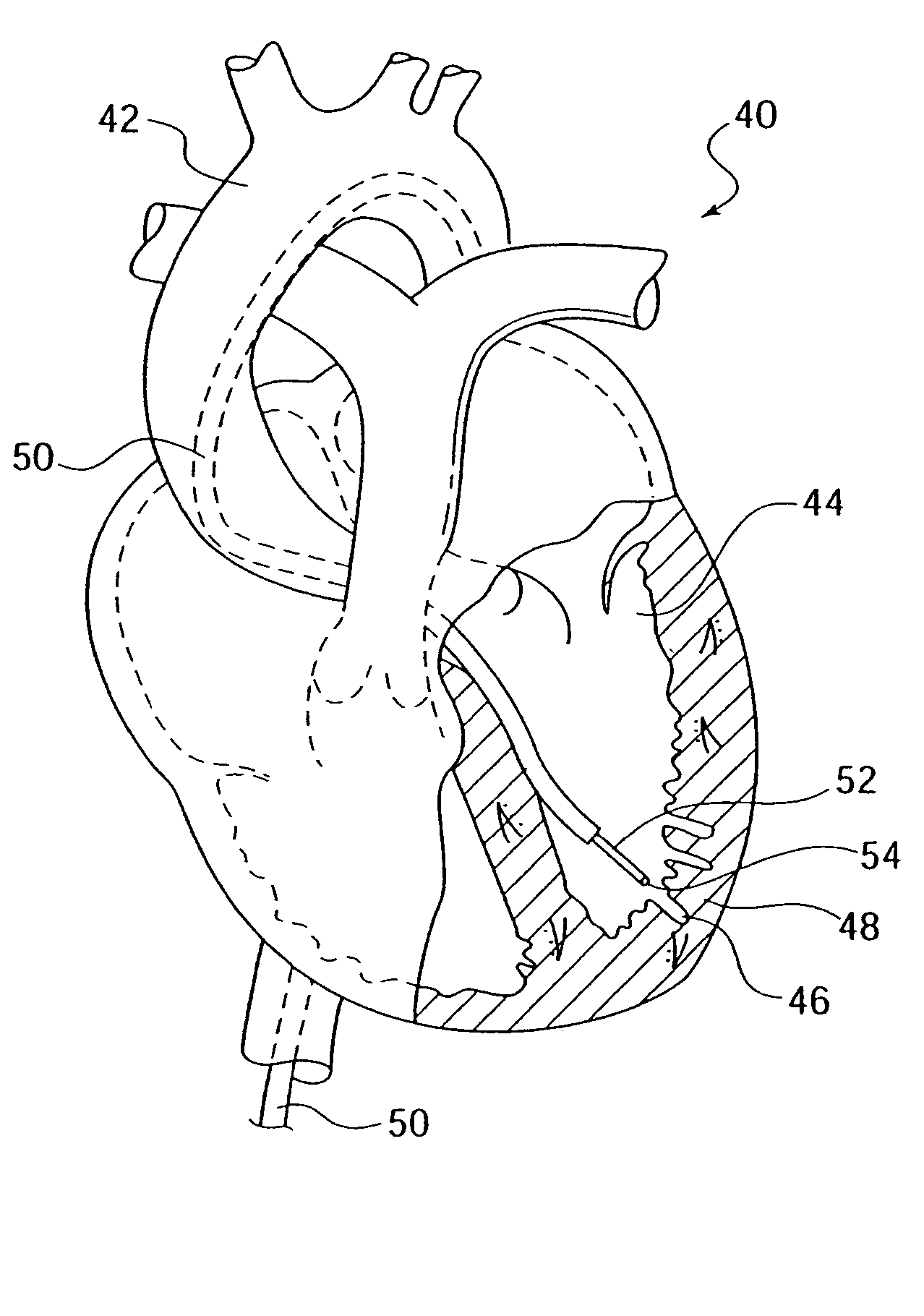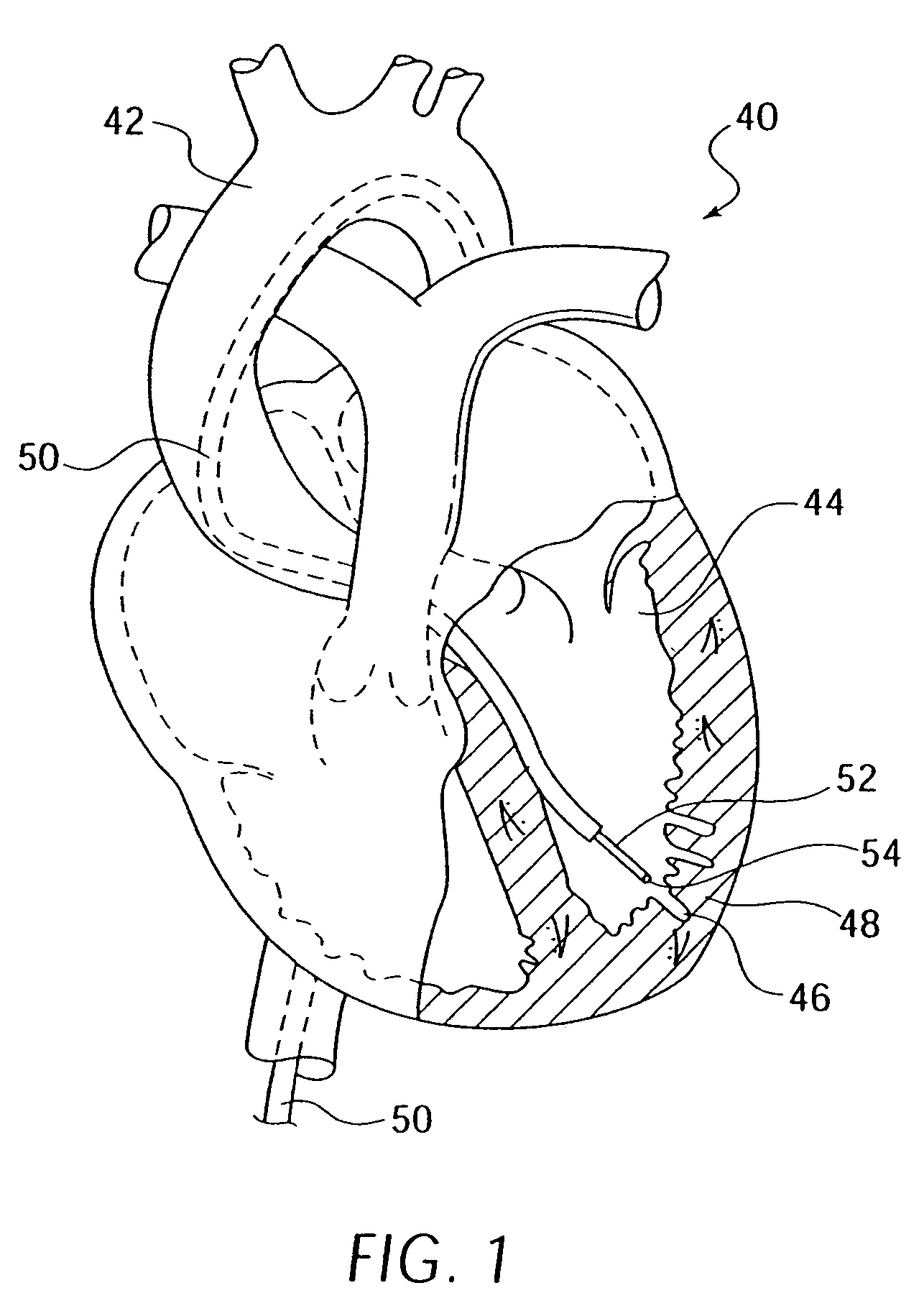Elongated medical device with functional distal end
a medical device and distal end technology, applied in the field of medical devices, can solve the problems of undesirable inserting of the larger outer tube distal end into the heart wall, difficult to restore the blood flow to the coronary artery, etc., and achieve the effect of lessening the likelihood of a shaft distal end, increasing resistance to penetrating the heart wall, and increasing the radial exten
- Summary
- Abstract
- Description
- Claims
- Application Information
AI Technical Summary
Benefits of technology
Problems solved by technology
Method used
Image
Examples
Embodiment Construction
[0055]FIG. 1 illustrates a human heart 40 having a guide catheter 50 inserted through the aortic arch 42 and into the left ventricle 44. Guide catheter 50 is shown having a therapeutic catheter 52 extending therethrough terminating in a therapeutic catheter therapeutic tip 54. Therapeutic tip 54 can be used to form a plurality of holes 46 in left ventricle wall 48. Therapeutic tip 54 can be used to form holes in order to stimulate a healing, response as well as to inject angiogenic substances such as VEGF and other factors well-known in the art. As can be seen from inspection of FIG. 1, the depth of holes 46 in left ventricle wall 48 are important as the holes should optimally not penetrate through the entire wall thickness of the myocardium. As further explained below, therapeutic catheter 52 is often not directly disposed within guide catheter 50. In particular, therapeutic catheter 52 may be disposed within an enclosing outer tube coaxially disposed between therapeutic catheter 5...
PUM
 Login to View More
Login to View More Abstract
Description
Claims
Application Information
 Login to View More
Login to View More - R&D
- Intellectual Property
- Life Sciences
- Materials
- Tech Scout
- Unparalleled Data Quality
- Higher Quality Content
- 60% Fewer Hallucinations
Browse by: Latest US Patents, China's latest patents, Technical Efficacy Thesaurus, Application Domain, Technology Topic, Popular Technical Reports.
© 2025 PatSnap. All rights reserved.Legal|Privacy policy|Modern Slavery Act Transparency Statement|Sitemap|About US| Contact US: help@patsnap.com



